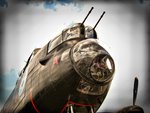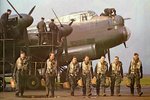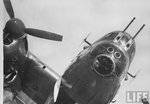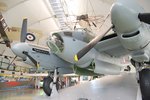- Thread starter
- #61
Both Ju 88 and Bf 162 have the similar thing going against them - the bomb bay does seem to be too small. The Ju 88 was also bigger than Mossie - 25% more wing area.
However, there were several options to improve Ju 88 range/speed/payload combination. Installing for a bomb panier, (a big one was to be used on Ju-388 and Ju-88A-15), meaning also extra fuel can be put in the previous bomb bay. I'd go for a panier that can hold 2 x 1000 kg bombs in tandem, or 3 x 500 kg for longer ranges. Might be possible to dive bomb in such a configuration.
If not, I've suggested earlier: maybe install the vertical racks as used on He 111, those hold 250 kg bombs. Shortcoming is that dive bombing might not be an option with He-111 racks.
Use the DB 603A. Those can cruise with 1170 PS at 5 km while using 325 L/h (86 US gals per hour). The 30 min rating will give 1510 PS while using 465 L/h (123 US gph). Problem is the low availability and reliability of those in 1943.
When talking about Mosquito - was it that because it was built from wood was so fast? From pbhen:
However, there were several options to improve Ju 88 range/speed/payload combination. Installing for a bomb panier, (a big one was to be used on Ju-388 and Ju-88A-15), meaning also extra fuel can be put in the previous bomb bay. I'd go for a panier that can hold 2 x 1000 kg bombs in tandem, or 3 x 500 kg for longer ranges. Might be possible to dive bomb in such a configuration.
If not, I've suggested earlier: maybe install the vertical racks as used on He 111, those hold 250 kg bombs. Shortcoming is that dive bombing might not be an option with He-111 racks.
Use the DB 603A. Those can cruise with 1170 PS at 5 km while using 325 L/h (86 US gals per hour). The 30 min rating will give 1510 PS while using 465 L/h (123 US gph). Problem is the low availability and reliability of those in 1943.
When talking about Mosquito - was it that because it was built from wood was so fast? From pbhen:
This is not to say that every riveted metal aircraft will look the same, but it raises an eyebrow.I saw a Halifax in Yorkshire (Elvington museum) the surface finish was closer to that of a ship than a mosquito, rough panels riveted together, absolutely nothing like that shown on the mosquito in your photo.
Last edited:




